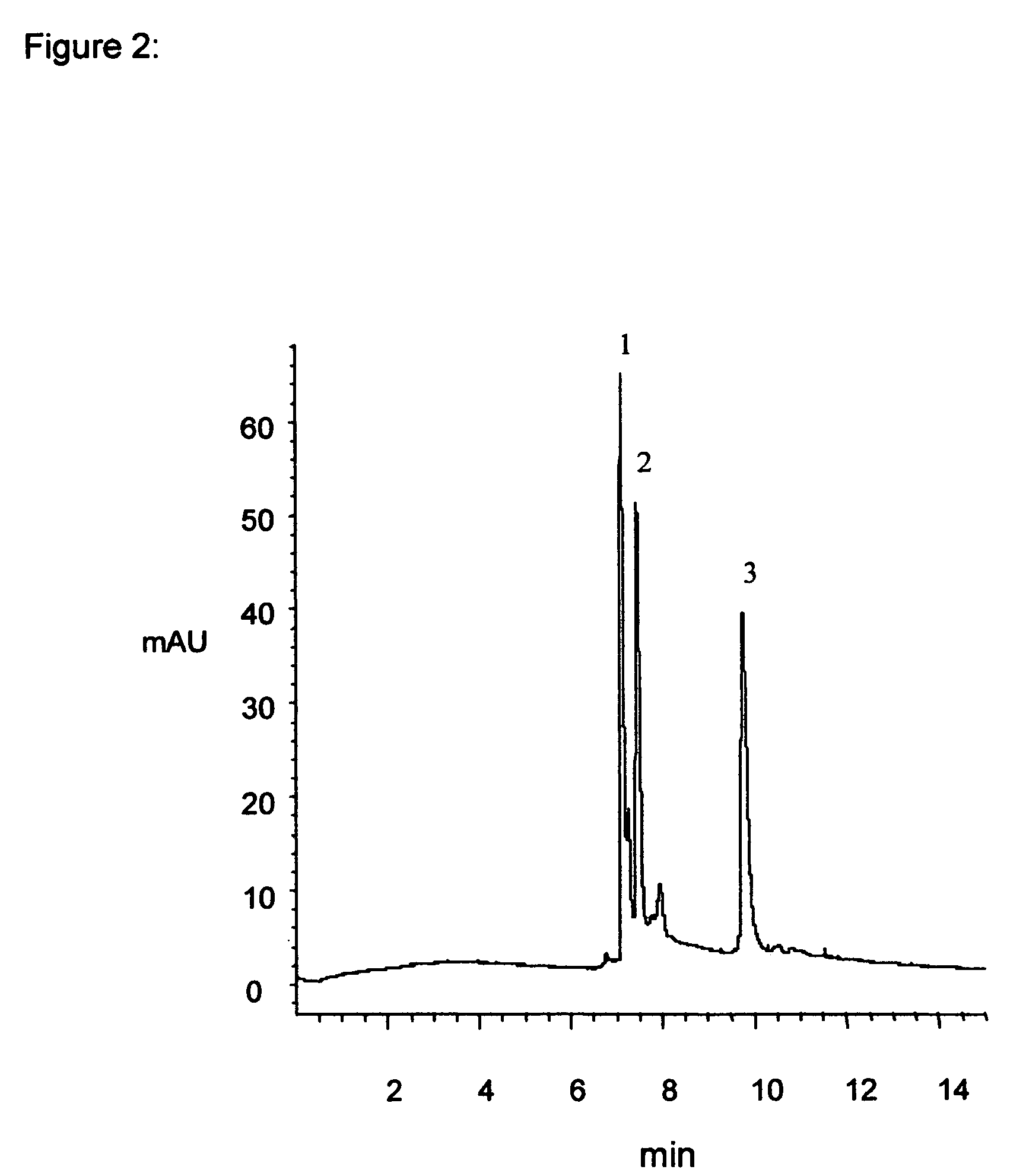Material and process for precisely controlled polymeric coatings
a technology of polymer coating and polymer material, applied in the field of polymer coating, can solve the problems of loss of efficiency and irreproducible binding, difficult to achieve reproducible separation, and interaction of analytes such as proteins with exposed surface silanol groups on the capillary wall, so as to reduce non-specific interactions for protein separation and suppress electroosmotic flow
- Summary
- Abstract
- Description
- Claims
- Application Information
AI Technical Summary
Benefits of technology
Problems solved by technology
Method used
Image
Examples
example 1
Synthesis of Pent-4-enyl-2-bromo-2-methyl propionate Precursor
[0060]With continuous stirring, 146 mL of 5-hexen-1-ol (3.0 mol) and 10 mL of triethylamine (60.0 mmol) were added at 0° C. and under a nitrogen gas atmosphere to a 1000 mL round bottom flask containing 150 mL of dry CH2Cl2. 827 mL of 2-bromo-2-methylpropionyl bromide (3.0 mol) was added dropwise over 60 min to form a white triethylamine salt. The resulting solution was then stirred for 1 hour at 0° C. The solution was warmed to room temperature over the next 5 hours, and became dark brown in color. The precipitate was filtered off and rinsed with 500 mL methylene chloride. The filtrate was extracted 4 times with 250 mL / each of saturated aqueous ammonium hydroxide (NH4Cl) and 4 times with 250 mL / each H2O. The crude brown oil was characterized and used in the next step of synthesis. 1HNMR (CDCl3, δ in ppm): 5.9-6.0 (m, 1H), 5.1-5.2 (d, 2H), 4.3 (m, 2H), 2.2 (m, 2H), 2.1 (s, 6H), 1.8 (m, 2H), 1.6 (m, 2H). Mass Spectrum (Cl)...
example 2
Preparation of 5-Trichlorosilyl pentyl 2-bromo-2-methyl propionate Initiator
[0061]In a 500 mL flask equipped with a nitrogen purge, 190 g of pent-4′-enyl-2-bromo-2-methyl propionate and 125 mg H2PtCl6 in 1.0 g of isopropanol alcohol were mixed. 160 g of HSiCl3 was added at room temperature dropwise. The reaction is exothermic. Stirred the mixture overnight at room temperature. All volatiles were evaporated in full vacuum. 1H NMR (CDCl3, δ in ppm): 4.104.13 (t, 2H), 3.75-3.79 (q, 6H), 1.89 (s, 6H), 1.64 (m, 2H), 1.35, (m, 6H), 1.17-1.21 (t, 9H), 0.59 (m, 2H). MS (Cl): m / z 430 (M+NH4), 412 (M+H), 384 (M−C2H5), 367 (M−C2H5O), 287, 245, 180.
example 3
Self-Assembling Initiator Monolayer on Microchip Substrate
Step 1: Microchip Surface Clean-Up
[0062]The glass cover slides and silicon wafer (cut into pieces of 24×30 mm2 or 20×15 mm2) were treated with piranha solution (70% H2SO4+30% H2O2 (30% concentrate)) in a beaker for 30 min at 70° C. The cover slides and wafers were then rinsed thoroughly with the Barnstead Nano-pure water (18.2 MΩ-cm), and dried in oven at 120° C. for 1 h.
[0063]The piranha solution should be handled with extreme caution, as it tends to violently react with most organic materials. There should not be organic materials present in the area where the piranha solution is being used. The operator handling the piranha solution should be equipped with double safety gloves, for example, nitrile and neoprene, and should exercise any additional safety precautions that are warranted.
Step 2: Self-Assembling a 0.15% Solution of Initiator Molecules as a Monolayer
[0064]In preparing 150 mL of 0.15% 5-trichlorosilyl pentyl 2-br...
PUM
| Property | Measurement | Unit |
|---|---|---|
| Capillary wave | aaaaa | aaaaa |
Abstract
Description
Claims
Application Information
 Login to View More
Login to View More - R&D
- Intellectual Property
- Life Sciences
- Materials
- Tech Scout
- Unparalleled Data Quality
- Higher Quality Content
- 60% Fewer Hallucinations
Browse by: Latest US Patents, China's latest patents, Technical Efficacy Thesaurus, Application Domain, Technology Topic, Popular Technical Reports.
© 2025 PatSnap. All rights reserved.Legal|Privacy policy|Modern Slavery Act Transparency Statement|Sitemap|About US| Contact US: help@patsnap.com



